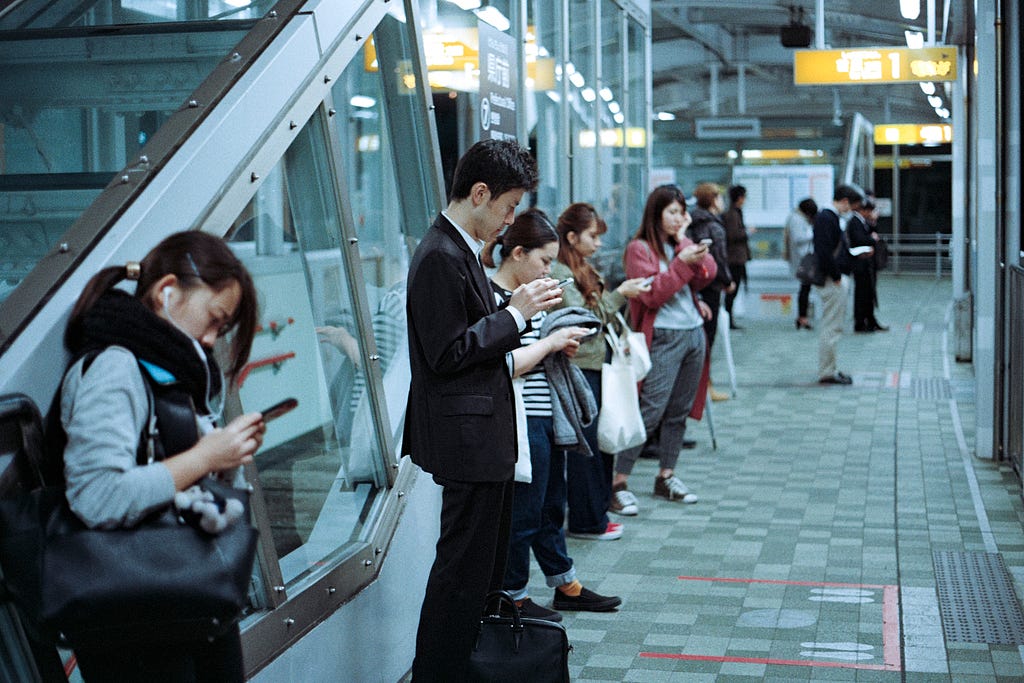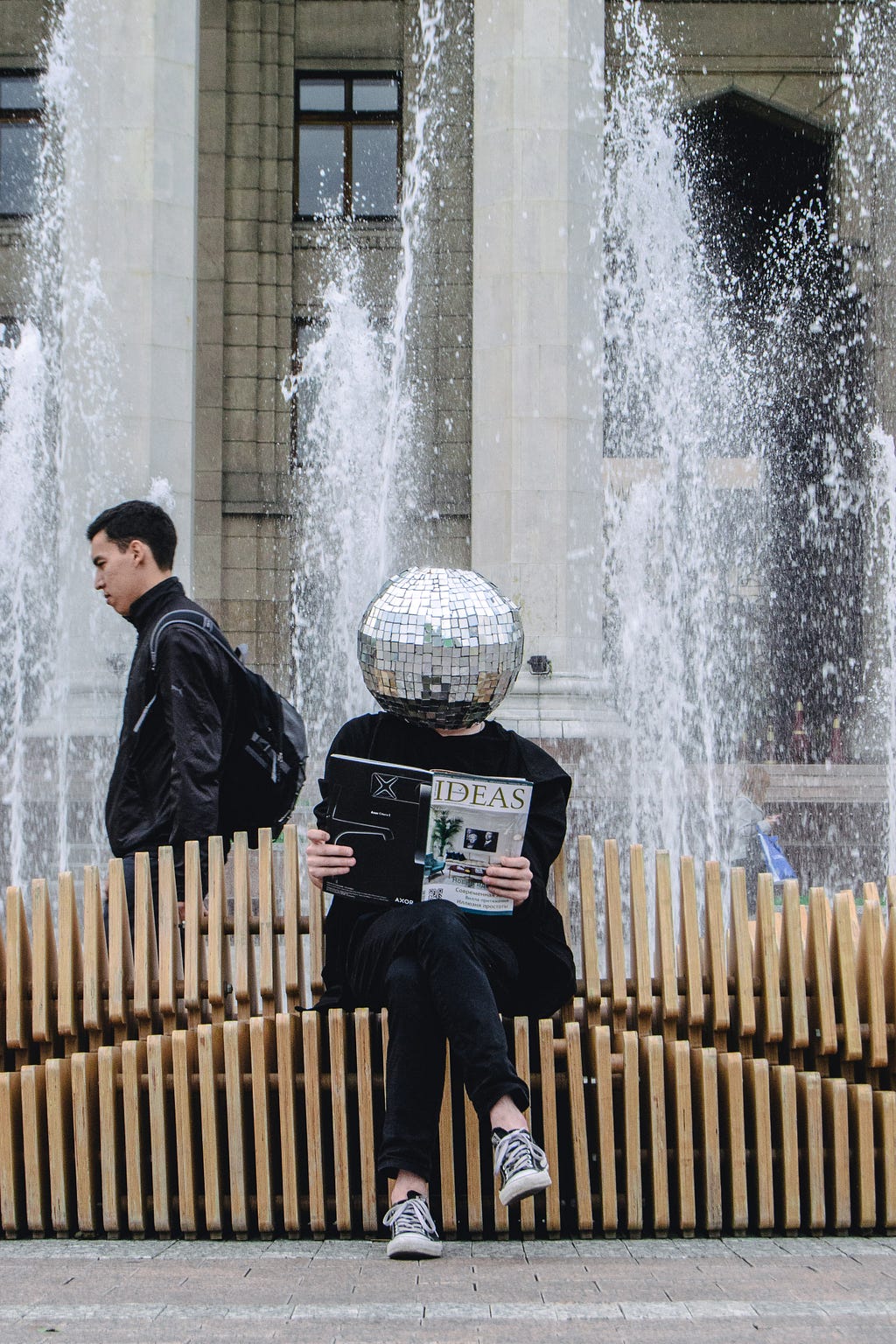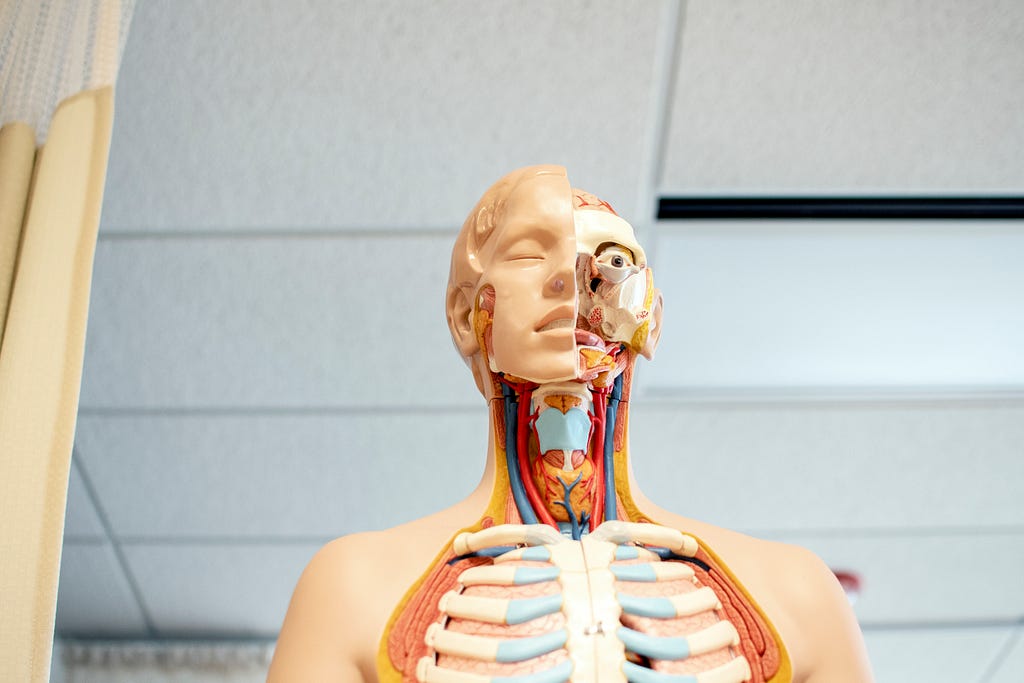Latest news about Bitcoin and all cryptocurrencies. Your daily crypto news habit.

If you missed it, read Part 1 in this series to see how reality can be extended from our minds.
It’s a game changing technology. Maybe the last one we will need. We are creating the hive mind. Wires linking everything. We are building another world inside our heads, and we are teaching A.I how to thrive there. But is it what we ultimately want? Do we want to live in a fake world generated by machines? Or the world of lies created by men?
Merging
Smartphones bring supercomputers to our hands. Touchscreens allow us to interact easily with computation an AI to carry out a centuries worth of human effort in a single second. Conversational Interfaces allow us to talk with Alexa, Siri and Google so we can access superhuman abilities without thinking.
All this points to a merging between mind and computer.
And yet abstractions remain between the capabilities of modern technology and how reality works. With video calling you can see a friend, but via a small flat screen from a fixed perspective. With Wikipedia you can read a fact, but not see how that fact affects a system. When looking at google maps you can see a 2D image, but not how this relates to the streets around you.
When interacting in any way with modern devices you still need to convert your intentions into tiny finger movements to match the expectations of UI designer. And we are all constrained by the physical device and the incumbent conventions of the human-computer interface.
Extended Reality will change all this. It will bring spatial computing and natural interfaces.
By natural I mean, it will come natural to you, you won’t have to learn it. You won’t have to learn to type, or learn to Force Touch, or learn to swipe from off screen, memorize hamburger menus, understand login systems or any of the other truly arcane systems we have to kludge together to make mobile phones usable computational devices.
The next phase of computing will link mind with computation using an interface more natural to our expectations. It will allow everyone to use advanced computation. Everyone will be able to do centuries or more of human effort in a second. And this is only the beginning of the beginning of Extended Reality technology.
The world will become filled with invisible computers that can see.
We can’t see them, or know what they are thinking, but they will recognise us and generate a shared reality for us.
Extended Reality will bring immersive computing. We won’t have to stare at tiny screens or perch in front of monitors. We will be able to look around and see all relevant information and connections before our eyes. Computing — the ability to offload our intent to another substrate — will become easier and more even more important in our lives than before.
But how will we slide into a Digital Reality?
Awareness
Sit atop a mountain, look at a distant lake and 40,000 years of evolution will provide your mind with a slow feeling of peace and awe. This awareness is profound, unspoken and mystical. The changeless, eternal truth of emotion. Connect your mind to the internet and you’ll be immersed by pictures of cats, fast cars, screaming women, urgent tweets from professional advertisers and hate speech from political troll-farms. A constant, beautiful stream of chaotic novelty.
Extended Reality creates a portal between these two dimensions, the solid calmness of reality and the digital rush of novelty — a heady mix of serotonin, cortisol endorphins and adrenaline.
But maybe your mind isn’t ready for this yet. Our biological hardware evolves slower than the technological drive which controls it. We are mere passengers on this ride and we aren’t in control.
But who is extending reality? And why?
Constant Growth — Sustainable Culture or Cancer?
We are seeing the tech-corporations create global culture. They can’t help it — it’s in their DNA. The Techno-corps are forced by the fundamental drive of capitalism. They are constantly yanked into the future by their financial bindings. And growth, via new markets, must be created on the way.
Such growth is created from a seed of desire planted in public commons. The markets of shiny new things must continue to expand. The credit of today’s harvest depends on the growth of the following season. All these biennial devices, platforms and apps must be planted, nurtured and sold, whilst the old pickings of yesterday are thrown in the heap. But why? And who is in control of this global technology farm? Why isn’t my mobile phone good enough for another 50 years?
Infamously, Google’s motto was “Don’t do evil”. This could only have been whispered to it’s developers and propped up by its shareholders. The corporate machinations are deaf to such morals.
Growth And Novelty
The new market of Extended Reality will give offer another big bang chance of expansion and prevent the ‘Giant Tech Stars’, and the underlying economy, collapsing under its own weight. A kind of escape velocity is needed by tech companies in the current economic system to keep them accelerating forward and escape the event horizon of irrelevance.
Novelty powers the engine of innovation which pushes forward the ship of Utility.
But should we question why we need the wheels of technology need to keep rolling forward? When is enough already? Why do we need more? Why do we cover more of our world with factories and fill more of our ocean with plastic? And why do we need to pollute our conscious reality with more technology?
Slavery
So far we can see that man made technology has enslaved mankind more than mother nature managed, despite her best attempts.
Not many people, in the developed world, spend their days carrying water for plants anymore. We did, for the past 40,000 years. Ever since the Grasses became crops and co-opted us into being their stewardesses — they manipulated us to plant them across the planet and beyond.
We now spend our lives tending after technology instead. Our behaviour has slowly been co-opted by external forces.
A hunter-gather might have checked his local apple tree first thing in the morning, a palaeolithic rice farmer his crop field, a modern human — their twitter feed.
Perhaps ‘feed’ is the right term as it is nourishing fills the mind and needs to be cultivated by daily upkeep.
Evolution of Ideas, Technology, and Reality
When the first human shaped a flint knife it was just an idea. A bit of luck perhaps. It made hunting easier. But when he shared his idea for others to use — to copy — to improve upon it became Technology.
Technology is not hardware. It exists only in the minds of those who understand it and follows the same darwinian competition as its host. New ideas compete with current ones in the environment of the mind and successful ideas will be selected by reproduction via replication.
The faster ideas can spread, via communication of the idea and reproduction into hardware, the faster technology can evolve. A technology like Digital Reality allows itself to evolve exponentially faster because it is totally virtual — it doesn’t have the physical baggage of all the other classical darwinian systems to retard its evolution.
The hardware — whether it be AR enabled mobile phones, VR headsets, MR Glasses or Satellite Beamed Holograms is almost irrelevant as it is just the medium that the entire Extended Reality concept evolves through.
The key conclusion is that the fittest ideas, tools and technologies that allow human thoughts to evolve externally to the human brain will outcompete the other technologies and these are the ones that will remain with us in the future. By extending reality with digital interfaces we are fertilizing a new space for ideas to pass between minds faster than ever.
Virus
This virus of technology, spreading from mind to mind, evolving and competing, reproduces by the seed of hardware artifacts.
The flint knife and the VR Headset are the sex organs of this virus.
These symbiotic parasites — coined as memes by Richard Dawkins — sit above our biological structure and play in the waves and patterns of our cortex.
Infection
Language is the most common infection humans have — spread virulent to children by talking.
Or lying dormant for decades in the pages of books until it is re-understood. Art is another mental virus which compels us to create beautiful things, to cooperate with each other to make and use new things.
Technology is another infection — but it has a difference — it changes the world around us in permanent ways. Whereas language and art are aimed at changing the patterns in other minds so that that pattern is passed on again and again, the idea of technology is to imprint that pattern in reality, permanently. Technology is an artifact of the mind, but things like a flint knife can alter more than just mind-patterns. It can repeatedly make its mark on reality by cutting things. When we extend reality into the digital realm, we enable a new tools to be created that can make their mark in new ways.
To understand this fully we need to consider what we mean by changing reality, and how we know something has been changed. Knowledge is a irreducible part of our realty. And once knowledge has been invoked, it is hard for it to disappear again. This is not to be confused with the digital concept of data and information. Information is different — for example, I can have information about how many words are in this sentence and that is merely a fact that can later become untrue. However knowledge about how to count the number of words is always knowledge, and knowledge has a stronger connection to reality as it allows us to understand the changes we make to reality.
Why does this matter with respect to Extended Reality ? Because the technology we are creating is unpredictable, as it changes the laws of reality. Each time I try to count the words in this sentence, the words could change. The coupling of A.I. pattern generators into a world of Extended Reality — a world we believe to be real — will be a world we cannot predict or control.
Making Sense of our Sensors
Neuroscientists take the view that our sense of reality is created from the electrical impulses coming in from our sensors. Taste buds, retina cells, touch receptors, nasal ganglia and the motor nerves are, internally to our brain, just sensations that are structurally identical. Our minds construct consciousness by associating spatio-temporal patterns across incoming sensations and create a coherent reality from it. There is strong clinical evidence about the plasticity of the brain — that our reality can fundamentally change when exposed to new technology. For example if a camera is connected to an array of pressure needles, instead of a screen, and that pressure array is placed on the tongue of a human subject, before long the touch sensors of the tongue will create an image in the minds eye of the subject. The brain doesn’t know or care what signals are coming in, from what, or from where — it will still construct conscious reality.
This has profound implications for Extended Reality. The tools we create do not have to map directly to any known signal — we can create novel new representations of reality, and artificial data, and the plasticity of the brain will know what to do with them. With Extended Reality we will create a whole new field of sensors for the human mind. The plasticity of the brain has shown that as long as the motor patterns generated by the brain can be quickly, repeatably, consistently be associated with any sensorial input then the mind will be first aware of it consciously and then accept it as subconscious reality.
This allows a gateway for testing shocking new UI and Human Computer Interfaces to become normal. Augmented Humans might have incredible boundaries on how they increase their knowledge and utility in the world.
If you try to think for a second how many processes around the world you can understand without trying — how to open doors, make coffee, write an email, guess what your colleagues will say next — all these processes have become hardcoded in your neo-cortex without effort.
Extended Reality will provide functional knowledge flows we can hardly understand today.
Update : Read Part 3 in this series to how the fabric of our society will be affected…
Did you enjoy our post? You can comment and join the chat on Medium
We’d love to hear from you. Come find us on Twitter , Facebook and LinkedIn
Technology Extends Reality was originally published in Hacker Noon on Medium, where people are continuing the conversation by highlighting and responding to this story.
Disclaimer
The views and opinions expressed in this article are solely those of the authors and do not reflect the views of Bitcoin Insider. Every investment and trading move involves risk - this is especially true for cryptocurrencies given their volatility. We strongly advise our readers to conduct their own research when making a decision.




